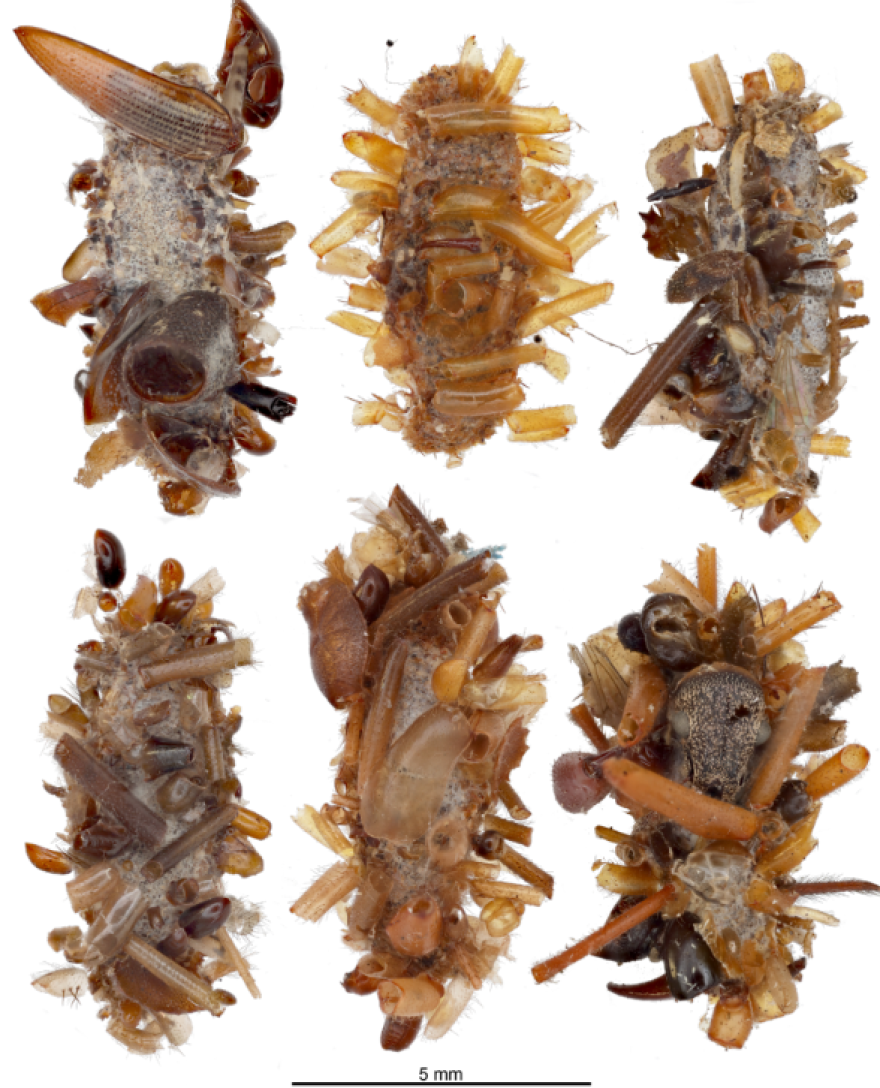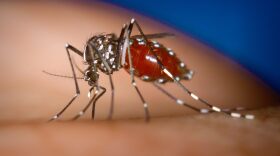A new species of Hawaiian caterpillar has been crawling through the headlines. More than 400 species of Hyposmocoma caterpillars are found only in Hawaiʻi.
They’re known as the fancy case caterpillars because they carry around a silk case with them like a hermit crab — some species spin a case shaped like cones, candy wrappers, or even burritos.
But a group led by a University of Hawaiʻi entomologist has discovered a carnivore caterpillar with a case that's new to science. They've nicknamed it “the bone collector.”
Found only in the Waiʻanae mountains, the bone collector caterpillar lives in spiderwebs and evades capture by encasing itself in the skeletons of the spider's victims and the spider's shed skin.

UH entomologist Dan Rubinoff and his team made the bone-chilling discovery for the first time at Palikea while looking for Hawaiian fancy case caterpillars.
"We'd been looking for other case types, and then we saw that, and we just weren't sure what was going on there. I was probably skeptical, but Will [Haines] picked it up, and then a little caterpillar sticks its head out. And I was like, 'Oh my gosh. These are caterpillars in here,'" Rubinoff said.
He said that it took years to believe the discovery wasn't just a coincidence and that these caterpillars purposefully lived near spiders and used bug bits to encase themselves.
"That is unprecedented. Caterpillars don't live with spiders on a normal basis. It's a very poor life choice if you're a caterpillar," he said.
Rubinoff said that he and his team first thought that the bone collectors hung out in abandoned webs.
"It took a while to realize that they are only sharing webs with spiders that are there, and that they use the spider to get food, essentially. So that's been a process. And in our defense, it's not that it's unexpected, it's that it's unimaginable. This is not on anybody's radar," he told HPR.
He said they've been working on the paper since 2008 because they wanted their data to be accurate and to show that the species is not on other islands.
"After this much time, I feel pretty confident that we aren't going to find them," he said. "In fairness, we've been through a lot of places on all the islands, and we found a lot of Hawaiian fancy case caterpillars, and this one only turns up in the Waiʻanaes."
Rubinoff said this discovery is an example of the "magical way evolution works in Hawaiʻi."
"How many times there have been things that have arisen here that don't occur anywhere else? This is just one example, and there are lots and lots of examples of that, and it just gives you a peek under the hood to how evolution works," he said.
To learn more about the study, click here.
This interview aired on The Conversation on April 28, 2025. The Conversation airs weekdays at 11 a.m. Tori DeJournett adapted this story for the web.





